





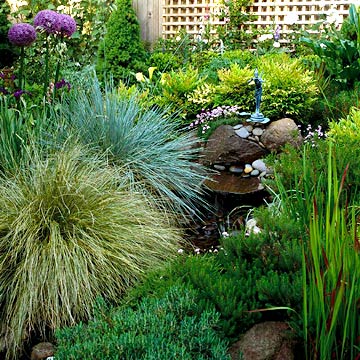
Single-color gardens show as much boldness and flair as the most elaborately matched schemes. A one-color strategy frees you to master the brushstrokes of form and texture. It also allows enough elbow room to explore a single-color palette's potential in pale and deep shades.
Consider green, for example; it doesn't fatigue the eye. It offers an endlessly varying palette, from true green, gray-green, and blue-green to purple-green and yellow-green. Each has a different impact.
Related Slide Show: Best Green Leaf Plants for Your Garden
continue reading belowIn small, all-green spaces, paint with plenty of blue-green plants. Blue-tint leaves have the same deepening effect as blue flowers. Blue hostas and Solomon's seal visually widen shady areas with their broad leaves. Meadowrue (Thalictrum) and Rosa glauca weave lacy texture into all-green gardens.
Color contrasts in a monochromatic garden rouse a simple palette and make it sing. Purple-green looks dramatic when rubbing elbows with yellow-green, for example. Blend pools of true green or silvery green in between.
Related Feature: Creating Colorful Foliage Gardens
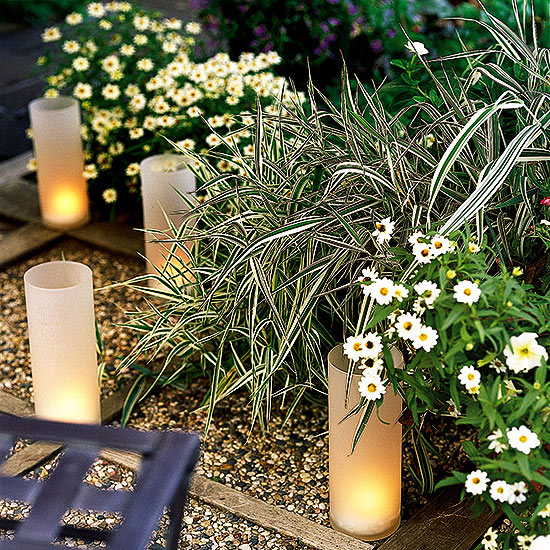
Turn a garden into a classic, using a palette of white. Widely available in flowers, foliage, and garden decor, white projects a refreshing clarity. Paint with white to expand your garden's visual boundaries just as you would brush on white to enlarge interior rooms. Dull or shady areas, especially, benefit from white's sparkle.
Include any variation of white, from buff to silver, to give your white garden interest beyond the pale. Light pastel colors blend well too, so highlight white with pale peach, yellow, lavender, and pink. In an all-white garden, texture becomes all-important in establishing individual plant identities. Combine thick, satiny petals with sheer ones; set off large, showy blooms by framing them with feathery flowers or foliage.
Related Slide Show: Best White Flowers for Your Garden
All-white gardens shine as the sun goes down. Place a fragrant white border where it will captivate at twilight. Some white fragrant bloomers to place along paths and lean against arbors include peonies, nicotiana, moonflowers, phlox, and lilies. Include jasmine or stephanotis in warm climates.
Garden elements reflect the same glow as white plantings. Pale-color gravel, stepping-stones, arbors, and picket fences put a permanent luster on white gardens.
Related Feature: Fragrant Garden Plan
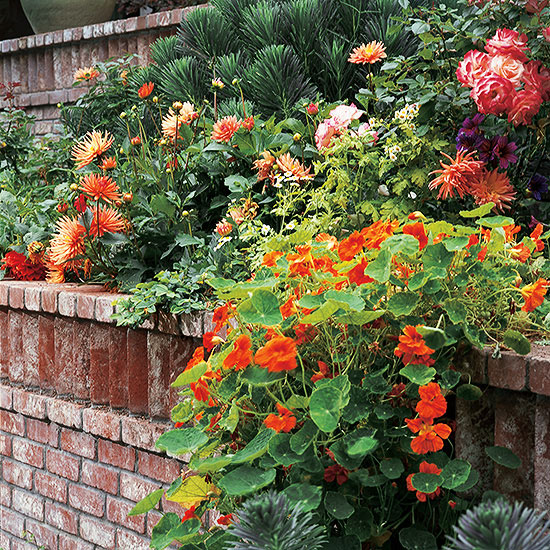
Florists and gardeners share this successful technique: An arrangement composed around a single color epitomizes elegance. Monochromatic plantings designed from the spectrum's warm side leave memorable impressions.
Textural interplay heightens the drama of a one-color garden. The bold trumpets of orange daylilies, for example, dance bloom to bloom with delicate plumes of pale peach astilbe and glowing wands of 'Lucifer' crocosmia. Strategic plant location also heightens the impact of monochromes. Place loose or open-branched plants toward the border front to allow a view through of more substantial flowers beyond. This down-in-front framing strategy helps create the same sense of suspense and depth as a bend in the path or a long view through an arbor.
Related Feature: Bold Colors for Your Garden
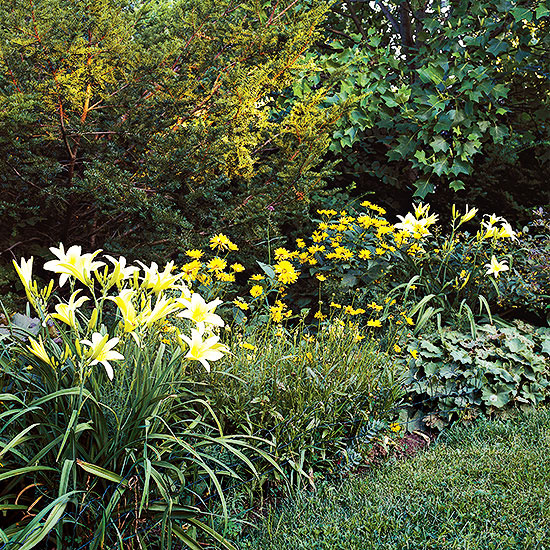
Another design technique involves planting a bed of annuals in monochromatic bands. Beds of multicolor annuals can confuse rather than compel. If limited to a single color and specific varieties, however, the planting has stronger impact.
Light intensity also heightens monochrome drama. An all-yellow border dazzles under softly lit, overcast skies or when located in a shady nook. Orange or red schemes look stunning poised against a west-facing view, where the sinking sun backlights them with a fiery aura.
Related Feature: Easy Annual Gardens with Punch
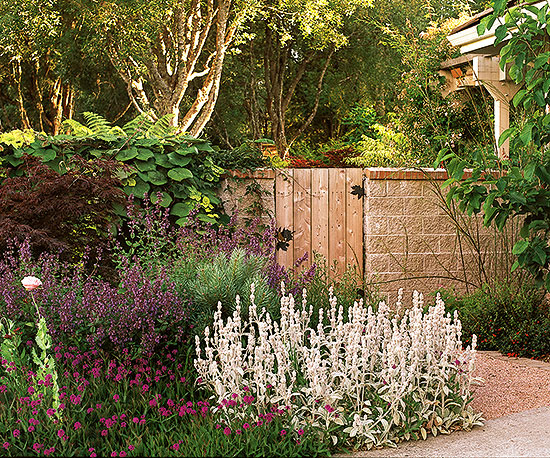
Purple reigns supreme in the garden. The color of cabbages and kings plants peace between louder colors and deserves garden homage to its quiet tones. An all-purple or all-lavender garden would appear downright melancholy. But various purple hues, mingled with silver or gold foliage and amplified with red or orange counterpoints, would emanate luminous splendor.
Make a purple planting more dynamic by playing every note in the purple range: violet, mauve, periwinkle, deep reddish purple, and purplish black. Give lavender the role of blender, as in multicolor gardens.
Once you've established a purple foundation, add contrasts. Surround purple plants with lighter silver and brighter gold to keep them in focus. Golden cultivars of conifers, flowering shrubs, and ornamental grasses stand out next to purple plants. Mingle purple smokebush and a purple-flowering Buddleia with a golden elderberry or Yucca flaccida 'Golden Sword'.
Silver companions shine in the presence of purple and bring out its mysterious side. Pair lamb's ears with aster, artemisia with a lavender rose, and autumn crocus with silvery blue fescue to create ethereal vignettes.
Avoid monotony in purple schemes by weaving in one emphatic color. Use just a few plants that accent the flower centers of purple blooms or the veining of purple leaves. A shout of fiery red or flashes of brilliant orange cast purple in a flattering light. One hot pink spotlight in a contrasting shape also works as the exclamation point in an all-purple statement.
Related Slide Show: Best Purple Flowers for Your Garden
There are several purple-leaved plants that can help accent or round out a purple color scheme:
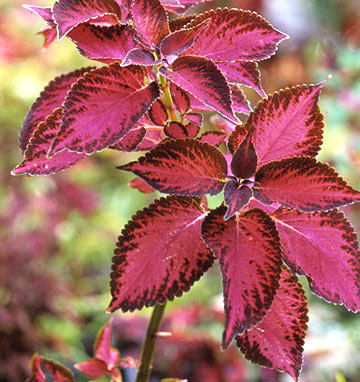
Related Feature: Free Garden and Landscape Plans
Copyright © www.100flowers.win Botanic Garden All Rights Reserved